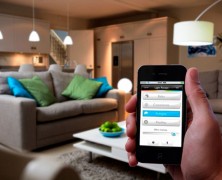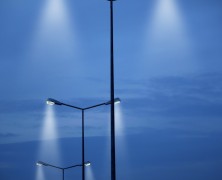How would you like an LED lighting system in your home that matched your body’s natural rhythms, optimizing your mental and emotional well-being? Or how about LED strip lights connected to motion sensors that guide you to the bathroom in the middle of the night? With home automation LED lighting systems, these are fully feasible options for today’s 21st century home owner. A home automation system uses wireless networking technology to program and remotely control common household systems including lighting, appliances, HVAC (heating, ventilation and air conditioning), or the locks of gates and doors, among other common home necessities. Rightfully so, there has been quite a bit of attention given to home automation in recent years. Home automation LED lighting systems, for instance, are more convenient, more energy efficient, and ultimately more exciting than traditional home lighting systems. Such systems exemplify the use of technology for real human benefit, in contrast to many convoluted technological “solutions” that make things even more difficult. Simplicity is a tremendously important feature as the world looks to reduce its carbon footprint through the automation of routine tasks. How do home automation LED lighting systems work? Imagine your home with a full network of LED lights that you can control with an app on your phone or computer. Not quite sure what that would look like? Here are a few examples of the kind of control you would have: Motion sensors turn on/off and dim automated LED lights when you enter or leave rooms Turn off all the interior lights in your home with a simple click of an app button Use your smartphone to remotely monitor and adjust the lighting in your home while away on vacation An intelligent lighting system that turns on the lights at sunset and turns them off...
LED Lighting Installation Is Helping Save Baby Sea Turtles...
posted by Flexfire LEDs
A unique project in coastal Florida uses LED lighting to help young hatchlings avoid danger and find their way to the ocean. Led by the Sea Turtle Conservancy, the installation addresses a long-standing problem that has grown steadily worse over the past 30 years. This latest project joins human-centric and grow lights on an expanding list of fascinating biologic applications of LED lighting. As first reported in Scientific American, the installation specifically helps new sea turtle hatchlings find a direct path to ocean safety. Hatchlings typically emerge from their eggs in late afternoon or early evening, crawling up through sand from about 50 centimeters below the beach surface. They instinctively head for the soft lights on the ocean horizon, guided by moon and star reflections on the water. But this natural light is now eclipsed by the hotels, homes and restaurants that dominate today’s beachfront zones. The young turtles quickly become disoriented, often heading in the wrong direction. It’s a fatal mistake, as they can easily die of dehydration, get run over by cars or be eaten by inland predators. The situation is a significant threat to the survival of at least three endangered sea turtle species. Florida is home to 90 percent of sea turtle nesting in the U.S., and it is estimated that tens of thousands of hatchlings are lost each year. The Sea Turtle Conservancy (STC) has thus targeted this coastal area for a series of lighting retrofits aimed at reducing disorientation. So far, numbers prove that this LED lighting installation is helping save baby sea turtles. The retrofit has other benefits as well: LED lighting uses a fraction of the energy consumed by other lighting technologies, and lasts for several years with little to no maintenance costs. Further, residents and business...
London LED Street Lights...
posted by Flexfire LEDs
Joining major cities all across Europe, the United States and Asia, London has announced plans to upgrade 35,000 city streetlights with LED luminaires. It’s the first phase of a plan that will ultimately see 52,000 streetlights converted to LEDs over the next ten years, consistent with the city’s goal of a 60% reduction in carbon emissions by 2025. The plan was announced by the Transport for London (TfL) transit authority in conjunction with the mayor’s office, and represents the largest such investment in the city’s history. The first phase alone is expected to reduce emissions by 9,700 metric tons each year, while generating GBP1.85 million in savings for the TfL. Further savings are expected with the addition of a networked adaptive control system to this London LED street lighting installation, which will be programmed to control light levels according to traffic flow and overall road usage. The system will also automatically detect maintenance needs, saving money in both the short and long term....








